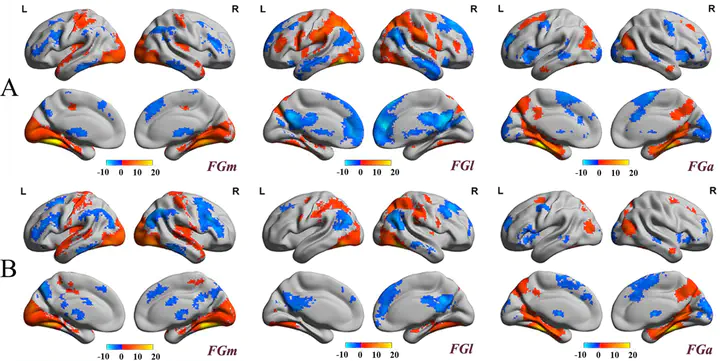 whole brain rsFC patterns
whole brain rsFC patternsAbstract
Within the object recognition-related ventral visual stream, the human fusiform gyrus (FG), which topographically connects the striate cortex to the inferior temporal lobe, plays a pivotal role in high-level visual/cognitive functions. However, though there are many previous investigations of distinct functional modules within the FG, the functional organization of the whole FG in its full functional heterogeneity has not yet been established. In the current study, a replicable functional organization of the FG based on distinct anatomical connectivity patterns was identified. The FG was parcellated into medial (FGm), lateral (FGl), and anterior (FGa) regions using diffusion tensor imaging. We validated the reasonability of such an organizational scheme from the perspective of resting-state whole brain functional connectivity patterns and the involvement of functional subnetworks. We found corroborating support for these three distinct modules, and suggest that the FGm serves as a transition region that combines multiple stimuli, the FGl is responsible for categorical recognition, and the FGa is involved in semantic understanding. These findings support two organizational functional transitions of the ventral temporal gyrus, a posterior/anterior direction of visual/semantic processing, and a media/lateral direction of high-level visual processing. Our results may facilitate a more detailed study of the human FG in the future.